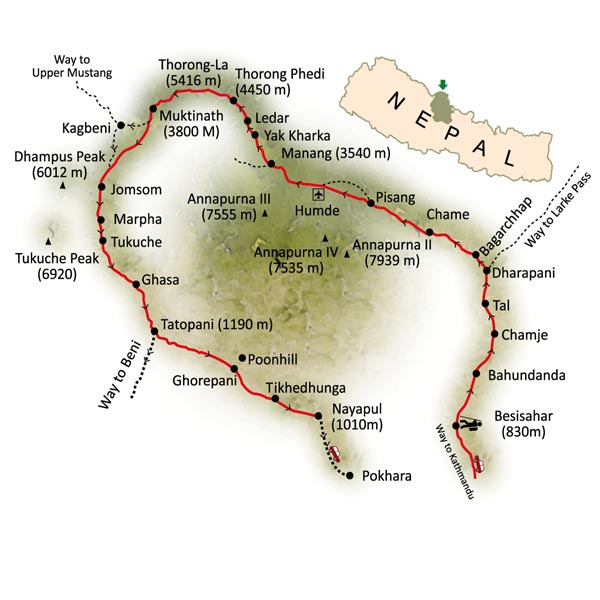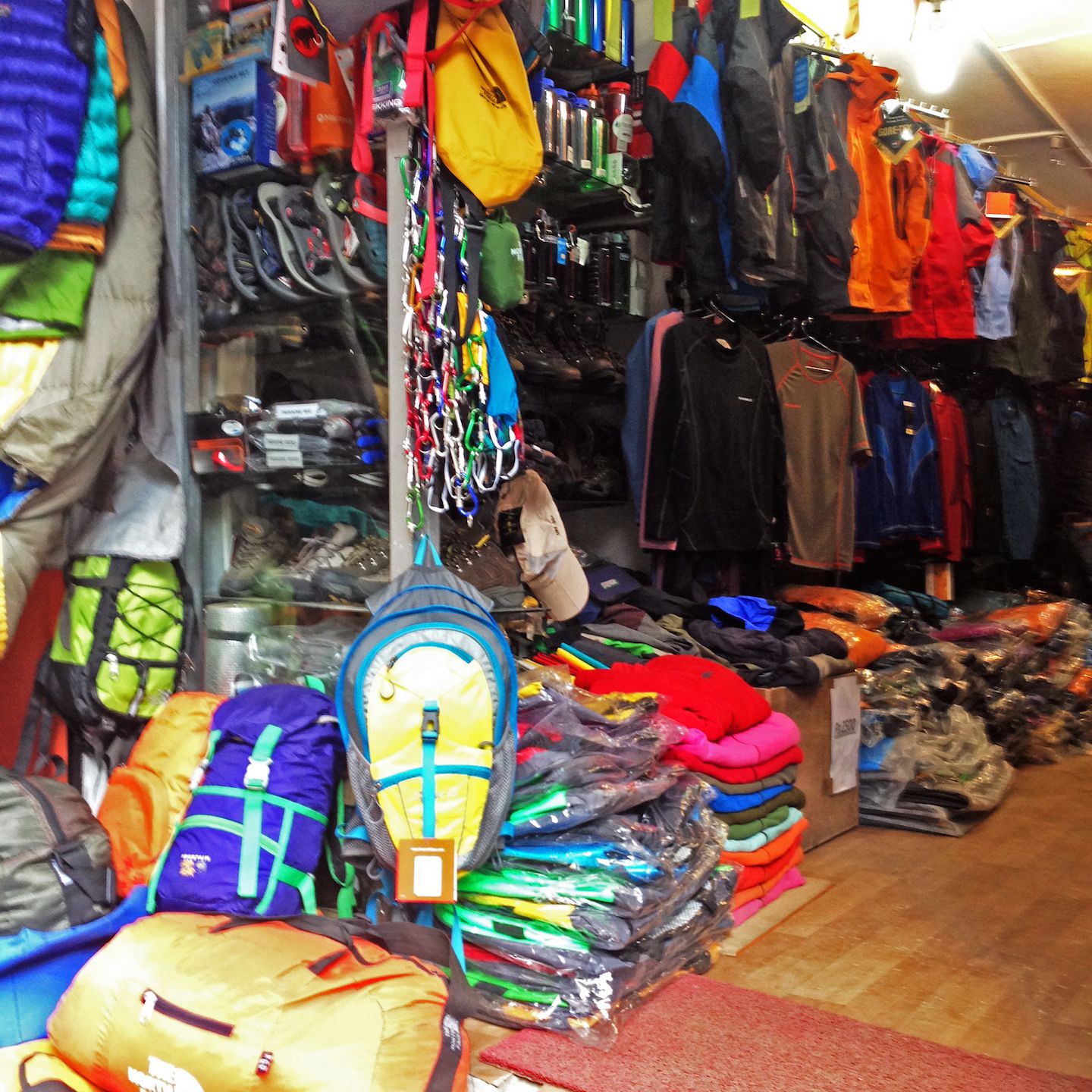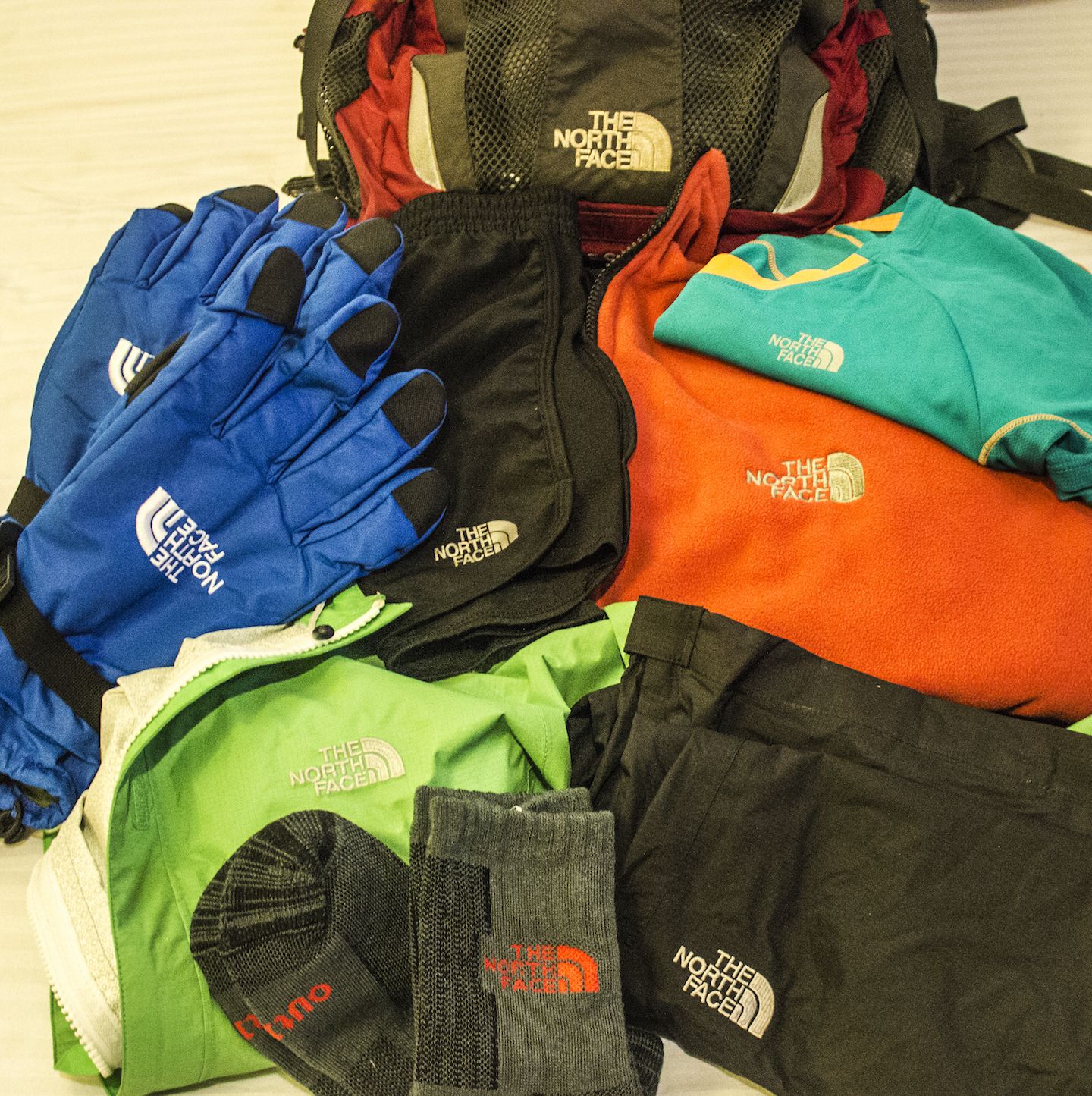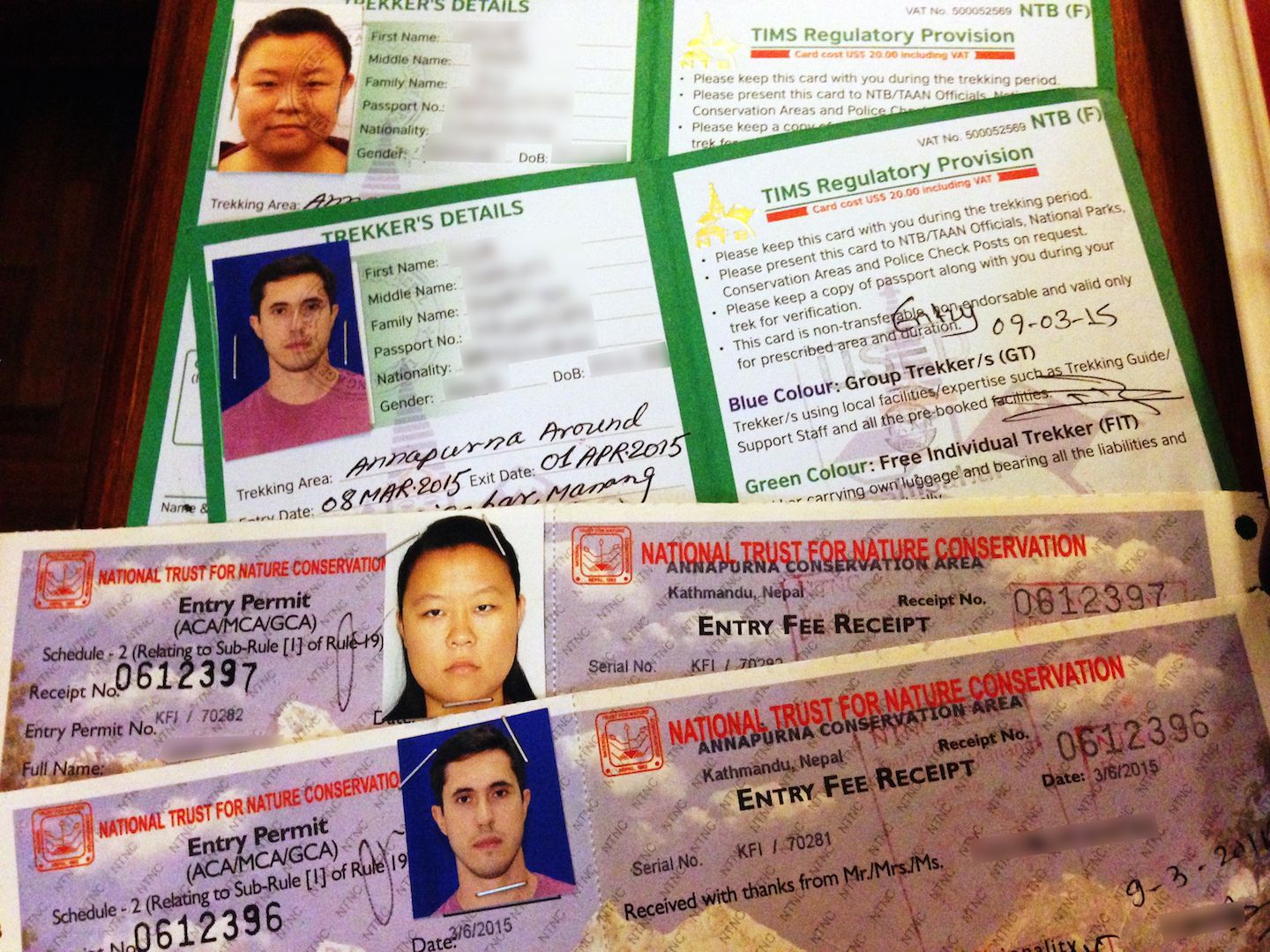Preparing for a trek in Nepal for us was like preparing for a mini-trip within our bigger trip. There were a lot of decisions to be made and like any trip, there were no right or wrong ones, only what suited us the best.
Which Trek?
Nepal has countless trekking routes, varying in region, length, and difficulty. Everest Base Camp is obviously the most famous, while many others such as those in the Annapurna region and Three Passes are also popular. We ultimately chose Annapurna Circuit for a few reasons:
- As the name suggests, it is a circular route. That means we don’t retrace our steps coming back down, but rather climb up and down along a different path the whole way.
- The scenery is supposed to be spectacular throughout; not just at the peak. Annapurna Circuit goes from the east side of the region below 1000m to 5416m at its highest point (Thorong La Pass) and then down the west side, through a variety of climate zones.
- It is a teahouse trek, meaning all along the way there are teahouses-turned-lodges to stay and eat. So we don’t have to carry tents or food! Most of them offer free housing if you pay for dinner and breakfast.
- No flights required. Everest Base Camp includes a roundtrip flight to Lukla, which is expensive and dangerous. A few days after we arrived in Kathmandu, a Turkish Airlines flight emergency landed on the runway. The airport did not have the equipment to move the plane off the runway, so the airport was closed for four days while they waited to ship the part to fix the plane from India. So even if we wanted to fly, we couldn’t.

Guide or No Guide? Porter or No Porter?
We came into Nepal thinking we wanted to get a guide and maybe a porter as well, but that changed within a few days in Kathmandu after talking with a few trekking companies. We had expected getting a guide to take care of everything, but it turns out we still had to prepare for most of it ourselves (i.e. choose our itinerary, buy our own gear, etc). We are very hands-on travelers who prefer to know everything and make our own decisions whenever possible. So even if we had a guide, we would have wanted to know the route inside-out, to understand altitude sickness and other risks, to negotiate the best housing/food/shower/charging prices, etc. If anything for us, a guide would have been a crutch and an excuse to not figure things out for ourselves. So if we were to learn, prepare, and manage everything already, a guide would just be a person who walked beside us.

This is obviously a very personal decision, and many people enjoy having a guide (and a porter) come along. Not everyone wants to deal with everything for themselves and would rather put their trust in a local. Not everyone wants to carry their bags (especially those who don’t pack lightly) and a porter comes in handy. For us, we neither needed a guide nor a porter, and felt that we could spend the money we would otherwise pay those people on other things that would be more helpful (i.e. charging batteries, hot showers, treats).
Annapurna Circuit Itinerary

Day 0 – Bus from Kathmandu to Besisahar
Day 1 – Jeep from Besiahar to Chame
Day 2 – Trek from Chame to Upper Pisang
Day 3 – Trek from Upper Pisang to Ngawal
Day 4 – Trek from Ngawal to Manang
Day 5 – Side trek/daytrip from Manang to Ice Lake or Milarepas Cave
Day 6 – Rest day in Manang
Day 7 – Trek from Manang to Yak Kharka or Churi Ledar
Day 8 – Trek from Yak Kharka/Churi Ledar to Thorong Phedi or High Camp
Day 9 – Cross Thorong La Pass and down to Muktinath
Day 10 – Trek from Muktinath to Kagbeni
Day 11 – Trek from Kagbeni to Marpha
Day 12 – Bus/jeep from Marpha to Tatopani
Day 13 – Rest day in Tatopani for hot springs
Day 14 – Trek from Tatopani to Ghorepani
Day 15 – Trek from Ghorepani through Poon Hill to Ulleri
Day 16 – Trek from Ulleri to Nayapul, then bus to Pokhara
Shopping for Gear in Kathmandu
While most people come to Nepal with everything they need, we did not have that luxury. Coming from six months in SE Asia, we only had summer clothes with us. So we had to buy/rent everything when we got to Kathmandu. This took us several long days of walking from shop to shop to shop in Thamel to get the best prices. I wouldn’t be surprised if we had literally walked into every single shop in the area, or more than once into some (they all look the same!). By the third or fourth day, we knew the prices pretty well and could tell immediately if a seller was inflating his prices 2x or 5x. It took a lot of effort (as usual we trade time and effort for money) but at least we spread the wealth around.

We knew we would rent a down jacket and sleeping bag, but all the other smaller items had to be purchased. From water bottles and hiking socks, to iodine pills and acclimatization medication, there was more to buy than I anticipated. Obviously all the brand name items were counterfeit, though they were a fraction of the cost back home ($7 for a “North Face” fleece jacket!). Besides the good quality down jacket and sleeping bag that we would rent, we weren’t too worried about quality as we just needed the other gear to last 15 days. Plus a higher price here didn’t necessarily equate to better quality.
We spent a little over USD 100 for both of us. For a full list of gear that we purchased and the price we were able to negotiate for them, click here to see the entire gear shopping list.
Annapurna Circuit Packing List
We’d like to think that we are pretty light-packers, and for this trek more than anything else, we especially wanted to pack as light as possible. We were going to carry everything up ourselves during 6-hour trekking days, so every little thing had better be absolutely necessary. The challenge was that we had to be equipped for both hot weather (during the sunny days) and cold weather (high altitude nights with no heating). Plus we needed special trekking gear that we bought in Kathmandu, which we will hopefully ship back home afterwards.

Our usual backpacks that we normally use on the trip were more than big enough, and we stored everything else at our guesthouse in Kathmandu. My bag weighed around 7-8kg (16-18lbs) while Carlos’ bag weighed around 10kg (22-24lbs). Just like this is a mini-trip within our bigger trip, we thought of this as a mini-packing list within our usual list of possessions. For a detailed list of every single thing that went into our backpacks, click here for the full Annapurna Circuit Packing List.
TIMS and ACAP Permits
Last thing before we’re ready to go was take care of the paperwork. TIMS (Trekkers’ Information Management System) is a card for trekkers in Nepal and ACAP (Annapurna Conservation Area Project) is a permit to enter the Annapurna Conservation region.
We went to a TIMS office in Thamel that did not seem very legitimate and then to the National Tourism Board for the ACAP (15-min walk from Thamel). The overall experience was akin to going through customs and immigration at the airport – a bit unorganized and seemingly unofficial. We walked away with our permits convinced that if something really happened to us, these pieces of paper would do nothing. As expected, there was no one we could really depend on but ourselves.

Do I have doubts that I will be physically capable of completing the trek? Yes, and I expect to have days where I will ache and not want to climb any longer. Am I afraid of feeling altitude sickness? Of course, which is why we spent considerable time learning all about it. Do I think I will get through it? Absolutely. It will probably be the hardest thing I’ve ever done, but I’m looking forward to proving to myself that I can.
Annapurna Circuit, here we come!

